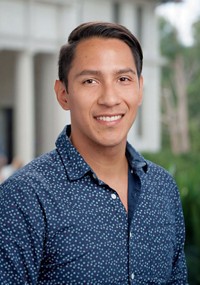Advertisement
Grab your lab coat. Let's get started
Welcome!
Welcome!
Create an account below to get 6 C&EN articles per month, receive newsletters and more - all free.
It seems this is your first time logging in online. Please enter the following information to continue.
As an ACS member you automatically get access to this site. All we need is few more details to create your reading experience.
Not you? Sign in with a different account.
Not you? Sign in with a different account.
ERROR 1
ERROR 1
ERROR 2
ERROR 2
ERROR 2
ERROR 2
ERROR 2
Password and Confirm password must match.
If you have an ACS member number, please enter it here so we can link this account to your membership. (optional)
ERROR 2
ACS values your privacy. By submitting your information, you are gaining access to C&EN and subscribing to our weekly newsletter. We use the information you provide to make your reading experience better, and we will never sell your data to third party members.
Diversity
Opinion
LGBTQ+ chemists react to Carolyn Bertozzi’s Nobel win
Throughout her career, Bertozzi has been a champion and role model for queer chemists
by Bec Roldan, special to C&EN
November 25, 2022
| A version of this story appeared in
Volume 100, Issue 42

When I first heard Carolyn Bertozzi speak at the American Chemical Society national meeting in the spring of 2017, I was a closeted college sophomore, still in the early stages of my journeys with chemistry and queerness. Bertozzi represented to me what she has for so many others: a shining example of what it means to be a successful, captivating, and proudly out chemist. In the years that followed, I would come to learn just how much of a powerhouse Bertozzi is, developing the field of bioorthogonal chemistry while championing diversity in science, technology, engineering, and mathematics as a gay woman.
When I sat down to interview Bertozzi for my podcast, My Fave Queer Chemist, in the summer of 2021, a lot had changed since that first time I heard her speak. I was almost halfway through my PhD at the University of Michigan, my journey with queerness and transness had evolved to the point where I was out to the whole world, my community of LGBTQ+ chemists had grown exponentially, and I was finally beginning to understand the enormousness of Bertozzi’s impact. So when I woke up on Oct. 5 to the news that she had just become the first out chemist awarded the Nobel Prize in Chemistry, I let out a few joyful tears. It felt as though my LGBTQ+ chemistry community had won.
Since beginning her academic career in 1996 at the University of California, Berkeley, Bertozzi has made a point to lift others as she rose to greatness. Dirk Trauner credits Bertozzi as the reason he started his academic career at UC Berkeley in 2000. “From day one, I knew I could talk to her openly about professional and private concerns,” recalls Trauner, now an out gay professor at the University of Pennsylvania. For Nancy Scott Burke Williams, an associate professor of chemistry at the W.M. Keck Science Department of Claremont McKenna, Pitzer, and Scripps Colleges, Bertozzi had a huge impact on her journey toward coming out as transgender in 2012. “Seeing how Carolyn was seen as such a renowned scientist made me question what I had always assumed prior to 2012: that coming out would mean the end of my career,” Williams recalls. “It was what [actress] Laverne Cox calls a ‘possibility model,’ someone you see that makes you believe that possibilities exist for you that you had previously never believed in.”
Throughout her career, Bertozzi has remained a steadfast role model for the next generation of LGBTQ+ chemists. Nick Chiappini, who recently began as an assistant professor at the University of North Carolina Wilmington, met Bertozzi while he was a graduate student at Stanford University in the late 2010s. “Carolyn has always been boldly and proudly herself and did so in an era where far fewer were out,” Chiappini says. “Every bit of her journey has made my journey and other queer chemists’ journeys easier.”
Today, Bertozzi continues to make science more equitable through her role as a principal investigator. “Anyone who meets Carolyn can sense the level of authenticity she brings to the table,” says Justin Donnelly, a graduate student in the Bertozzi lab. This authenticity has influenced Donnelly’s own journey learning how to exist in science while remaining truthful to his gay identity. L Handy, another graduate student in Bertozzi’s lab, says, “Carolyn gave me the courage to be proud of who I am in a scientific environment.” When Handy came out as nonbinary, they received “an outpouring of support” from the members of their lab. That support, Handy says, “speaks volumes to the incredibly supportive, encouraging, and diverse community [Bertozzi] cultivates.”
On the day of Bertozzi’s historic win, it felt as though my entire community was celebrating. “It was one of the biggest moments of unfettered joy I’ve felt at science news in a long time,” Chiappini recalls. Bertozzi is not only the first out chemist to win the Nobel Prize in Chemistry, but is also one of few women to have received the honor. “Growing up, I didn’t have any scientific role models that were women, let alone queer,” Handy says. “The Nobel Prize win for Carolyn not only symbolizes that queer female scientists do, in fact, exist but establishes that we are talented, that we are valued, and that we finally have the potential to be recognized for our accomplishments.” For Donnelly, Bertozzi’s win is “another proof point of what those of us who have been mentored by Carolyn already know: authenticity and generosity do not get in the way of groundbreaking science; they are the keys that unlock it.”
On the day of the Nobel win, Bertozzi continued what she does best—laying the groundwork for more queer excellence in chemistry and creating a seat for us at the table.

Bec Roldan is an organic chemist, podcaster, and science communication enthusiast from rural Louisiana. They are a fourth-year PhD candidate at the University of Michigan.
Do you have a story you want to share with the chemistry community? Send a submission of about 800 words to cenopinion@acs.org.




Join the conversation
Contact the reporter
Submit a Letter to the Editor for publication
Engage with us on Twitter